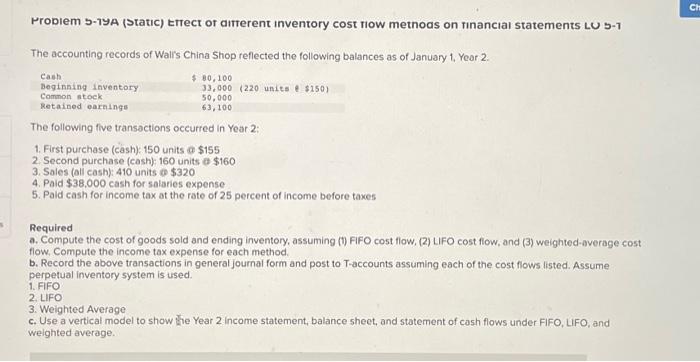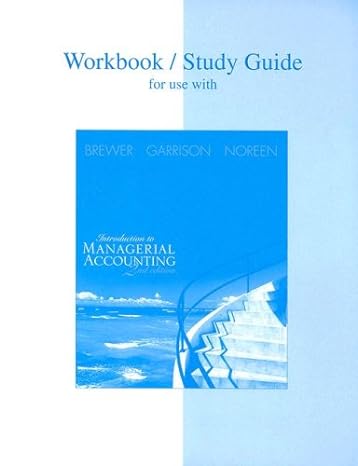Answered step by step
Verified Expert Solution
Question
1 Approved Answer
S Problem 5-19A (Static) Effect of different inventory cost flow metnoas on financial statements LU 5-1 The accounting records of Wall's China Shop reflected the
S Problem 5-19A (Static) Effect of different inventory cost flow metnoas on financial statements LU 5-1 The accounting records of Wall's China Shop reflected the following balances as of January 1, Year 2. Cash Beginning inventory. Common stock Retained earnings The following five transactions occurred in Year 2: 1. First purchase (cash): 150 units @ $155 2. Second purchase (cash): 160 units @ $160 3. Sales (all cash): 410 units @ $320 4. Paid $38,000 cash for salaries expense 5. Paid cash for income tax at the rate of 25 percent of income before taxes $ 80,100 33,000 (220 units @ $150) 50,000 63,100 Required a. Compute the cost of goods sold and ending inventory, assuming (1) FIFO cost flow, (2) LIFO cost flow, and (3) weighted-average cost flow. Compute the income tax expense for each method. b. Record the above transactions in general journal form and post to T-accounts assuming each of the cost flows listed. Assume perpetual inventory system is used. 1. FIFO 2. LIFO 3. Weighted Average c. Use a vertical model to show the Year 2 income statement, balance sheet, and statement of cash flows under FIFO, LIFO, and weighted average. Ch

Step by Step Solution
There are 3 Steps involved in it
Step: 1

Get Instant Access to Expert-Tailored Solutions
See step-by-step solutions with expert insights and AI powered tools for academic success
Step: 2

Step: 3

Ace Your Homework with AI
Get the answers you need in no time with our AI-driven, step-by-step assistance
Get Started


